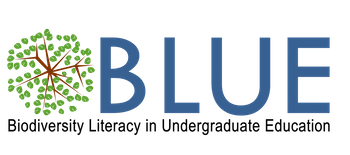Building Biodiversity Datasets for Invasive Species
Author(s): Sara Hansen1, Anna Monfils1, Debra Linton1
Central Michigan University
726 total view(s), 298 download(s)
InstructorCopy_BuildingBiodiversityDatasets_20230711.docx (Instructors only)(DOCX | 7 MB)
StudentCopy_BuildingBiodiversityDatasets_20230711.docx(DOCX | 7 MB)
ExampleDataTemplate.xlsx (Instructors only)(XLSX | 13 KB)
- Aggregated occurrence records of invasive European frog-bit (Hydrocharis morsus-ranae L.) across North America
- License terms
Description
Invasive species and associated ecosystem changes are a threat to global biodiversity. European frog-bit (Hydrocharis morsuse-ranae L.) is an invasive aquatic plant introduced to North America in 1932 and spreading throughout southern Canada and the northeastern and midwestern United States (Minshall 1940, Dore 1968, Hansen et al. 2022). Data are critical for understanding two questions: 1) How is this species spreading? and 2) How does this species impact the ecosystems it spreads to? In this module, students will explore the first question by accessing publicly available data and analyzing them through maps and reflecting on ways humans can impact the spread of European frog-bit. They will read about the effects of invasive aquatic plants and design a data template that could be used to sample European frog-bit and its habitat in Saginaw Bay, Michigan. By completing these activities, students should gain an understanding of how data inform invasive species research and conservation and be able to design and apply data using best practices.
Upon completion of this module, students will be able to:
- Explain the role of data in monitoring the spread and assessing impacts of invasive species
- Access publicly available biodiversity data through a data aggregator
- Analyze and interpret publicly available biodiversity data through mapping
- Identify ways humans impact the spread of invasive species and data about invasive species
- Describe the effects of invasive species on plant communities
- Apply vocabulary and concepts related to biodiversity datasets
- Translate field sampling protocols to data collection template
- Formulate research questions that could be addressed using data
Notes
This module was adapted to align with the 4DEE Framework as part of a Faculty Mentoring Network.
Cite this work
Researchers should cite this work as follows:
- Sara Hansen, Anna Monfils, Debra Linton (2023). Building Biodiversity Datasets for Invasive Species. Biodiversity Literacy in Undergraduate Education, (Version 3.0). QUBES Educational Resources. doi:10.25334/7G20-HK17
